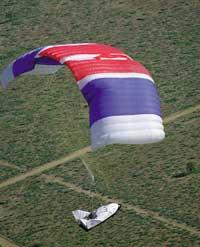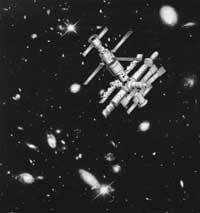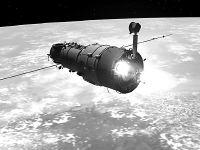Evolution of space stations
1999/02/01 Imaz Amiano, Eneko - Elhuyar Zientziaren Komunikazioa | Mujika, Alfontso - Elhuyar Fundazioa Iturria: Elhuyar aldizkaria
Since the Soviets launched the Sputnik 1 satellite on October 4, 1957 or, more specifically, since the first man was illuminated by the Americans in 1969, the two major world powers have taken different paths. The US followed the path of vehicle design to explore and reuse the solar system, while the Soviets embarked on long-lasting missions and development of space stations.
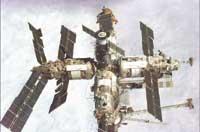
Thus things, the history of space stations is inevitably linked to the evolution of Russian space stations. This evolution can be divided into four epochs. In 1903, scientist and professor Konstantin Tsiolkovski exposed the laws on rocket movement and described for the first time the space station in orbit. He continued to write about rocket and space travel until his death in 1935 and has been the source of inspiration for several generations of engineers from the former USSR. In 1957, as has been said, the world's first artificial satellite was launched. And on April 12, 1961 the first man arrived in space, Juri Gagarin. A year later, Soviet engineers began to work on the idea of a space station that would be sent separately into space and in which it would be modular.
The second epoch (1964-1977) can be called "first generation of stations". The space stations of this generation had a single dock and could not supply new equipment or fuels. Without crew they spaced and then received the cosmonauts. They were of two types, the Almaz military and the Saliut civilians, but the Soviets tried to mix both with the Westerners of Saliut. Saliut 1 was the first space station in history on April 19, 1971. The first attempts of this generation had many errors (the crew that traveled to the Soiuz 10 spacecraft could not enter Saliut 1. The Soyuz 11 lived for three weeks in the space station, but when they returned to Earth they died due to the ship's air loss...), but they soon learned and, corrected the errors, subsequent sessions succeeded.
The third stage (1977-1985) consists of seasonal spaces of "second generation". On this occasion they also spaced Saliut 6 and Saliut 7 without crew, but having two docks they could supply new equipment and fuels. At this time, space stays were significantly extended (the longest stay was 237 days) and were also visited by astronauts from several states (Hungary, Poland, Romania, Cuba, Mongolia, Vietnam, East Germany, France and India). The duration of spacecraft used to return to Earth also increased considerably, while the initials lasted between 60 and 90 days in space, the Soiuz-tm over 180 days. Its use in the international space station will last more than a year. In 1986 he left the Saliut 7 station for the last time and in 1991 he entered the terrestrial atmosphere and dissolved.
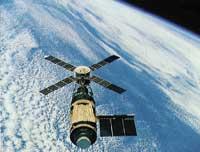
The last epoch (from 1986 to the present) is that of the "third generation" or Mir. Mira has spent 11 years in space and 9 of them have had continuous "inhabitants". This space station consists of a main core and 6 modules with dimensions greater than 32.5 meters and an approximate width of 27.5 meters, while by weight exceeds 100 tons. Mir's core was spaced in 1986 and the docking module in June 1995. The longest stay has been 438 days and has also received visitors from different states. In recent times US astronauts have been present almost uninterruptedly. The experience and knowledge acquired at this station have been fundamental in the design and proper planning of the International Space Station. This year it is expected that after entering the Earth's atmosphere and disintegrating it for the most part they will fall into the sea, but the Russians want to reuse their parts and components to save money and together with the Americans are studying this possibility. This would increase the duration of the station.
However, the US has a space station in its history, Skylab. This was launched into space in May 1973 with the Saturn V projector, similar to that used for the Moon. In this space station there were three stays of 28, 56 and 84 days. In 1974 NASA proposed to take it to a higher orbit, but more solar activity than expected extended the Earth's atmosphere and finally in 1979 Skylab entered our atmosphere and was destroyed.

Gai honi buruzko eduki gehiago
Elhuyarrek garatutako teknologia



